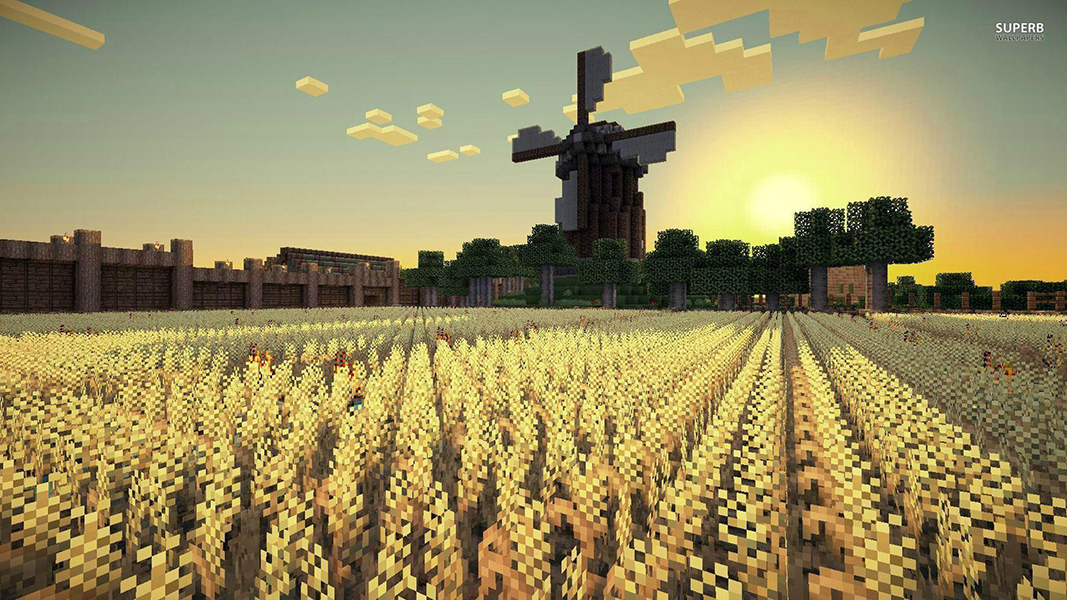Minecraft is a sandbox video game well known for its characteristic pixelated look, dropping players into worlds comprised of solely cubes where they are encouraged to explore rather than complete tasks or progress a storyline. Since its release in 2009, the game has blown up to become one of the best-selling games in history behind Tetris and Wii Sports, garnering 112 million monthly players.
Although it’s been 11 years since its initial release, Minecraft is still going strong. In fact, recently there’s been a revival of Minecraft content, especially on YouTube following a playthrough by one of the biggest channels on the platform, PewDiePie. It begs the question: how is it able to maintain modern gamers’ interest? When trying to explain how Minecraft has become such a huge phenomenon, it’s easy to list out its key features: an open world platform for players to enjoy both single and multiplayer game modes that offer survival, building, and exploring. However, Minecraft isn’t the only game to have these basics. Arguably, its popularity is largely in how it manages to deliver these features, and it does so largely through its atmosphere.
One example of the importance of Minecraft ’s atmosphere is how any YouTube video of the game’s soundtrack shows innumerable comments filled with nostalgia for the instrumental music. The music of Minecraft is essential in shaping the experience. The majority of the game is played in silence other than sound effects such as the crunch of walking or the snort of animals. This is broken by events, such as the time of day, that cause slow, melodic piano and synth notes to begin echoing into the landscape. One of the most notable songs is “Wet Hands.” The music, by the artist C418, creates a mood of quiet and solitude, yes, but also of peacefulness, making the cartoon art style seem rustic and folksy rather than cold and digital.
The world of Minecraft also manages to evoke an ominousness one wouldn’t expect. In survival mode, players are dropped into randomly generated worlds filled with opportunities to explore and resources to gather. Evidence is scattered throughout the world of human activity and past life, but there are no other human entities in the game beyond players. Villages can be found sporadically with inhabitants that are humanoid but only speak in sounds of confusion, rare fossils form deep beneath the earth, and structures like abandoned mineshafts, woodland mansions, and fortresses can be explored. This implied lost history creates a feeling that the player has missed some cataclysmic event, one that allowed skeleton men and creepers to overrule the world while humans faded into obscurity.
This idea of there being more to the world of Minecraft is only furthered by the poem that plays at the end of the game. Although it doesn’t have a concrete plot, Minecraft does have bosses that can be encountered and one final boss that can be defeated to reveal a piece of poetry and credits. The poem features dialogue between two unknown narrators who break the fourth wall, meaning they acknowledge that they’re inside a game.
They express sweet but odd thoughts such as, “Does [the player] know that we love it? That the universe is kind?” to which the other replies, “Sometimes, through the noise of its thoughts, it hears the universe, yes.”
The narrators continue to explain that the entire game, and furthermore life outside the game, is a dream with consequences based in another reality the player is unaware of and must manifest a higher level of consciousness to realize. It’s at times like these when ***Minecraft rejects the idea that it’s merely for one age demographic or that it lacks depth.
The poem ends with the words: “And the game was over and the player woke up from the dream. And the player began a new dream. And the player dreamed again, dreamed better. And the player was the universe. And the player was love. You are the player. Wake up.” The credits roll.
This metaphysical boundary is also pushed within the paintings of the game. Using in-game resources, paintings can be created to decorate houses that feature pixelated versions of real work by Kristoffer Zetterstrand. His process for making his art involves creating digital still lifes in landscape generators that he distorts then uses a physical medium to paint. Similar to the poem, he also breaks the fourth wall and plays with reality by using the physical to represent the digital that is then pixelated and put in as decorations in the digital again — a video game.
Although Minecraft has become synonymous with a younger player base, nothing about the game is childish in itself. It’s accumulated enough of an adult fanbase to warrant a closer look at how mood is a huge part of the player experience. Not only are players drawn in by the endless possibilities that the world of Minecraft t offers, but they remain nostalgic long after for the atmosphere it portrays.
Chandy is a biology major/chemistry minor who's been a staff writer, Arts editor, and Managing Editor at The Cascade. She began writing in elementary school when she produced Tamagotchi fanfiction to show her peers at school -- she now lives in fear that this may have been her creative peak.


